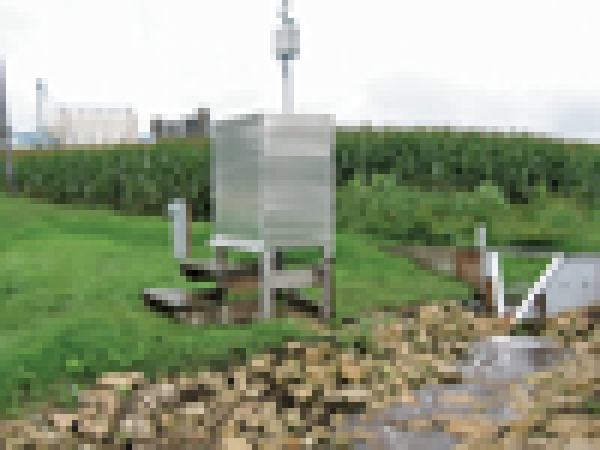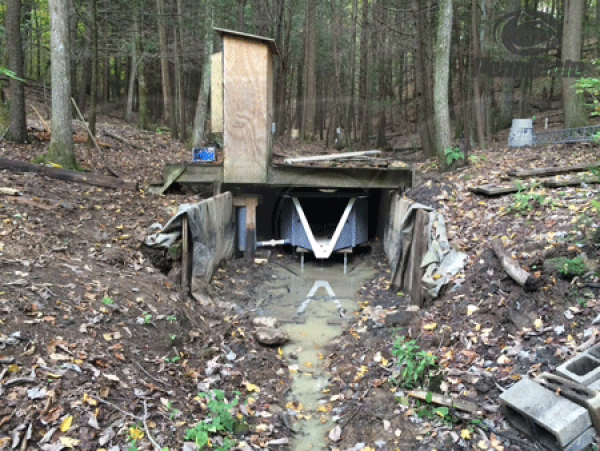This website uses a variety of cookies, which you consent to if you continue to use this site. You can read our Privacy Policy for
details about how these cookies are used, and to grant or withdraw your consent for certain types of cookies.
Turf Plot Monitoring with H Flumes
As populations increase there in an increased need for water conservation and water quality preservation to extend and protect ground and surface water reserves. Yet in many urban areas, considerable amounts of water and fertilizers are used for lawn and landscaping needs. Unfortunately much of the water and fertilizer washes off or drains away without benefiting the lawn or landscaping.
Researchers (both public and private) use instrumented turf plots in order to better understand the varieties of turf grasses, their ability to capture nutrients (nitrogen and phosphorous), the release rate of those nutrients, and optimal watering cycles. A key component of this monitoring is the channelization and characterization of the runoff from the experimental plots.
H flumes have proven to be well suited to the unique requirements of plot runoff. Some of the key advantages that H flumes bring to experimental plot studies include:
- Excellent low flow characteristics
- Ability to handle a wide range of flows
- Readily pass silt and other solids
- Operate with a free-spilling discharge
- Short upstream requirements (an approach section is usually used)
- Concentrated discharge (works well with a Coshocton Wheel)
Typical Experimental Plot Layout
Many experiment turf plots are built up above the surround grade in order to make it easier to instrument the plot and control subsurface conditions. Dividers are frequently place between plot control the flow of nutrients and water.
Plots are usually laid out side by side to make it easier to monitor and control the conditions among the plots; sometimes with 20 or more individual plots in a row. Plots are usually rectangular in shape with the water quality and flow measurement instrumentation along one short end of the plot.
Instrumentation consists of a:
- Flume
- Sampler (automatic or Coshocton Wheel)
- Flow meter
- Parameter probe(s) (depending upon the nature of the study)
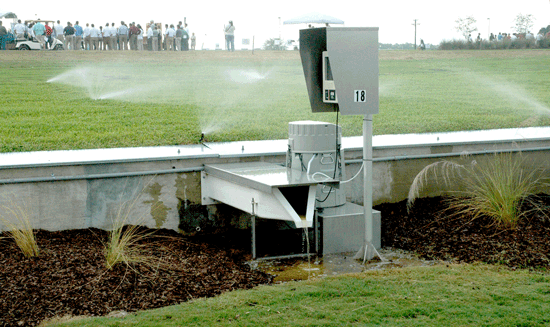
Primary Device Selection
In evaluating among primary devices for measuring the flow the choice commonly comes down to a thin plate weir or a short throat flume. Broad crested weirs / long throated flumes require too much space to be practical in experimental plot applications and are usually dismissed early on in the primary device selection process.
Weirs
For a weir to accurately measure flow an upstream weir pool is required. The size of the weir pool can be considerable depending upon the flow rates anticipated.
Also, the stilling effect of the weir pool means that the collection of representative silts and solids, necessary in some investigations, is problematic as the weir pool stills the water and accelerates the sedimentation process. While on the face of it, this would seem to be an advantage of the weir, the problem is that the weir pool has to be entered, samples taken, and then all of the sediment cleared before additional sediment is collected. When silts and sediment sampling is required, weirs are simply not able to provide continuous collection and are far too labor intensive.
An additional drawback of thin plate weirs is their relatively high minimum flow rates. Even the 22-1/2 V-notch has a minimum flow rate of 3.990 gpm [0.2518 l/s].
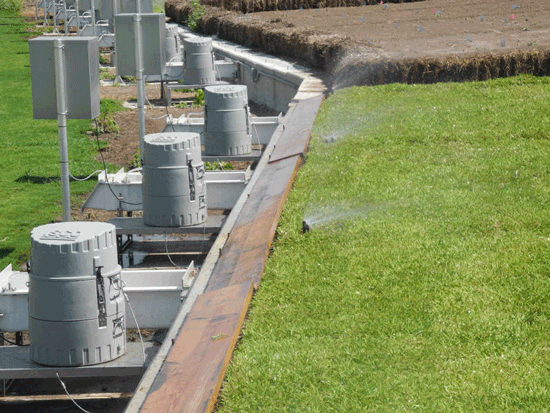
Flumes
As mentioned earlier, there are several key considerations when selecting a primary device for plot runoff: Ability to handle low flows, flow range, concentrated discharge, solids passage, and short approach. While some flumes posses some of these features, no flume, other the H flume, posses them all…and are economical doing so!
H flumes are relatively compact – being able to integrate their upstream requirement directly into the flume (approach section), are capable of accurately measuring flows down to 0.0718 gpm [0.0045 l/s], have good accuracy (+/- 2-5%), pass silt and sedimentation easily, and cover a wide range of flows (both as individual flumes and as a class of flumes).
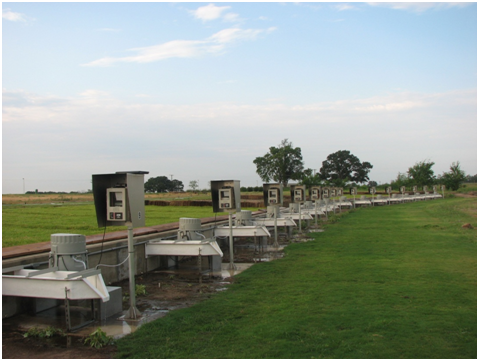
*A Coshocton Wheel is a runoff water sampler used to obtain a proportional sample of runoff water. The Wheel has one moving part, is simple to maintain, and requires no electricity. As a proportional sampler, the Coshocton Wheel eliminates the need to obtain and analyze discrete samples throughout the hydrograph.
Images: Texas A&M AgriLife Extension Service, Texas A&M AgriLife Extension Services via Science Daily, Texas A&M Department of Soil & Crop Sciences
Related Blog Posts
Explore more insights in our blog.

LOCATIONS IN ATLANTA, GA & BOISE, ID



